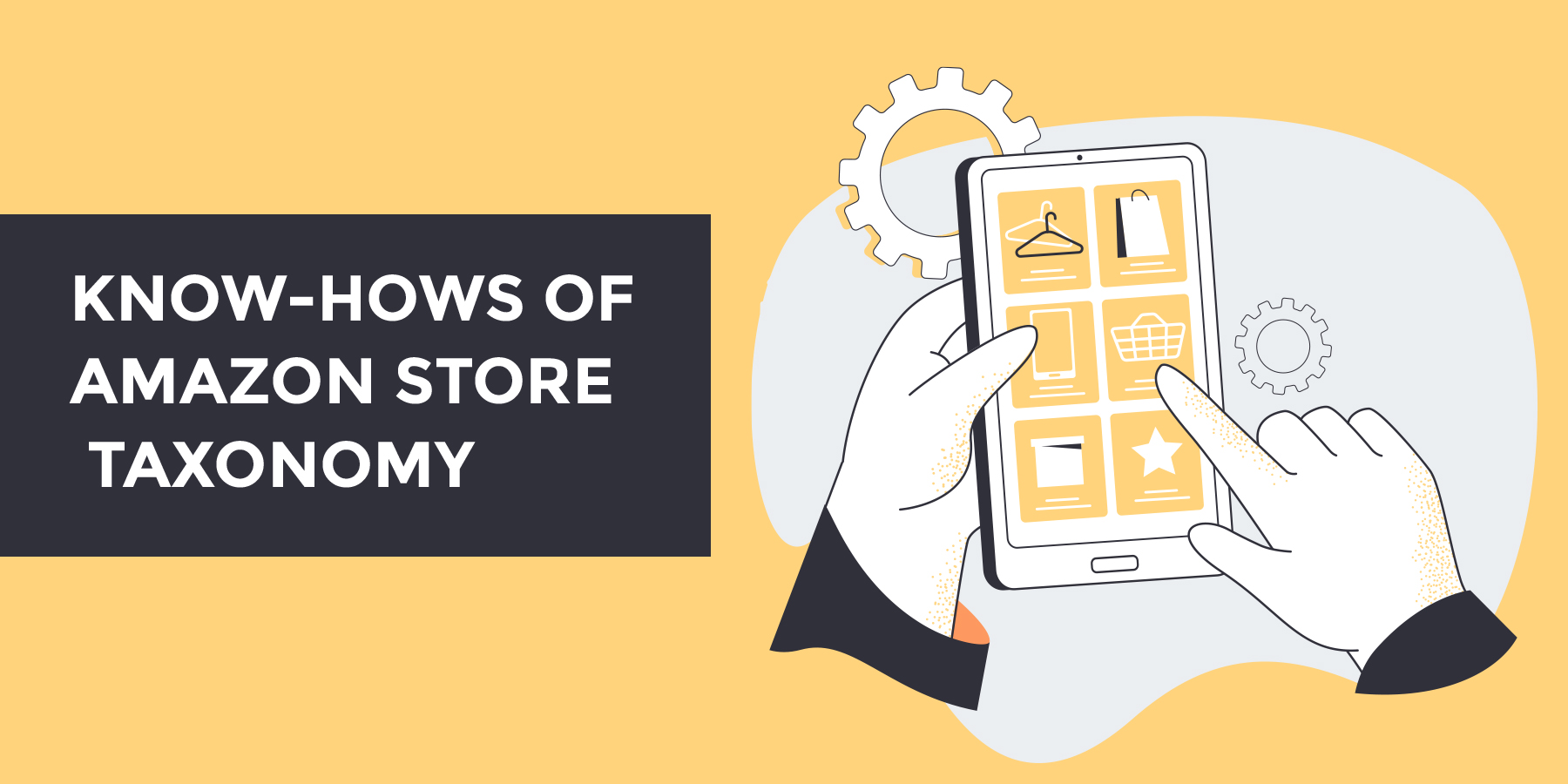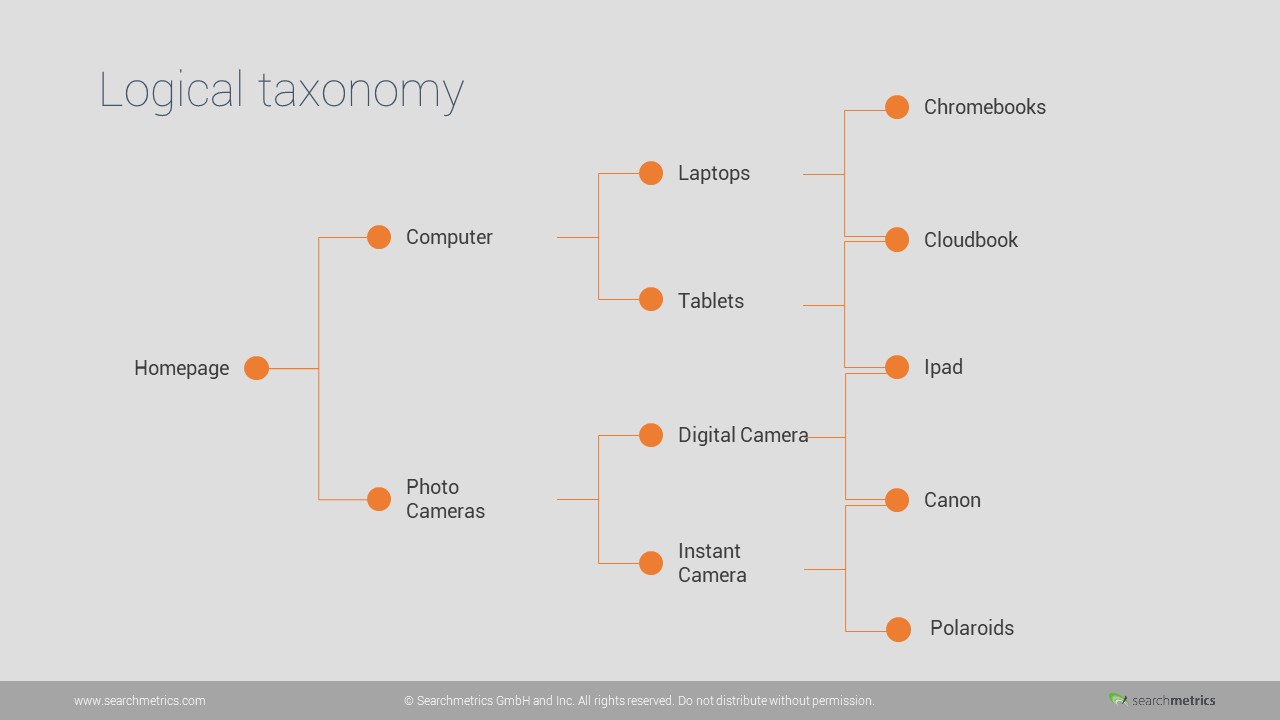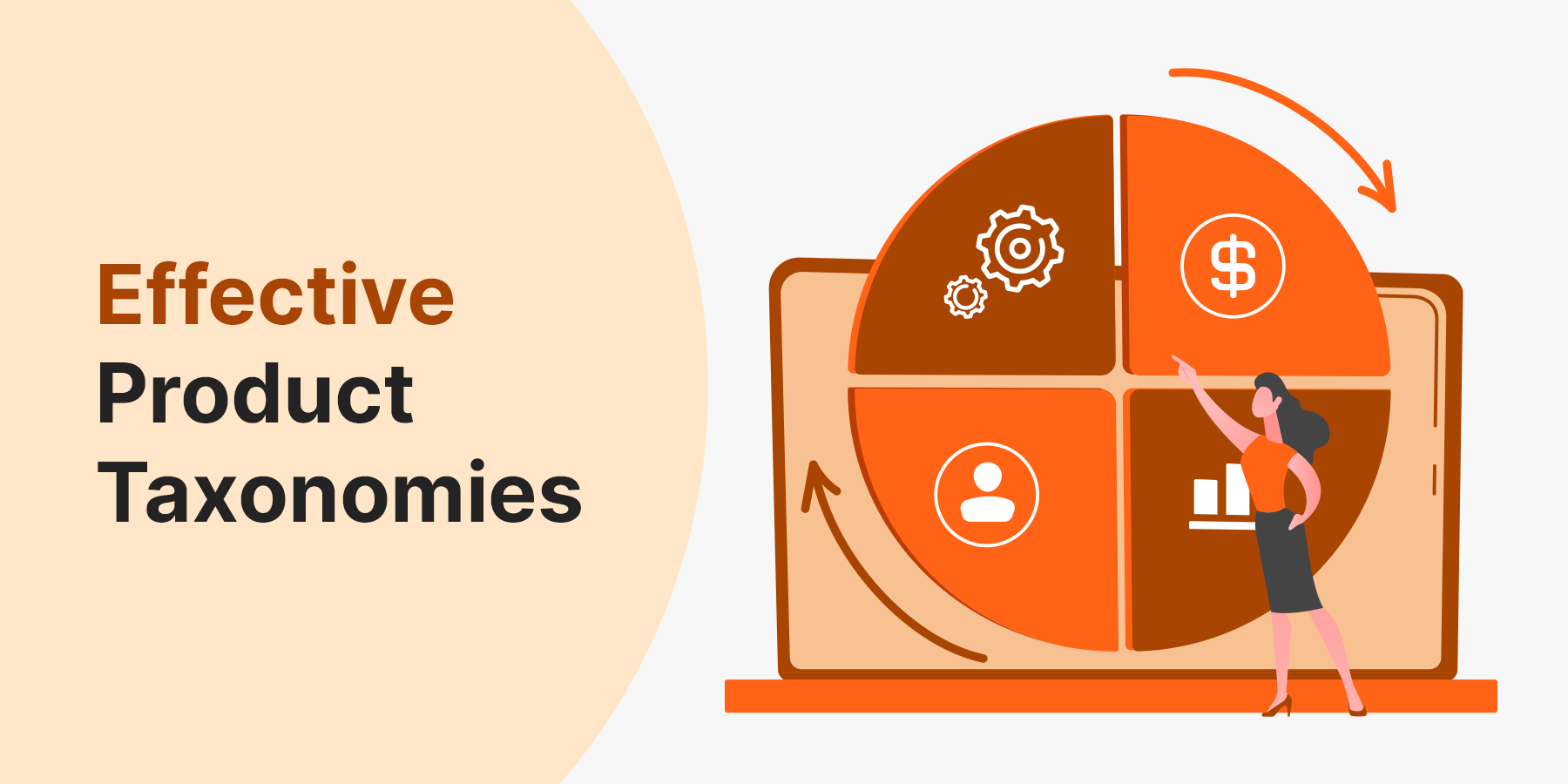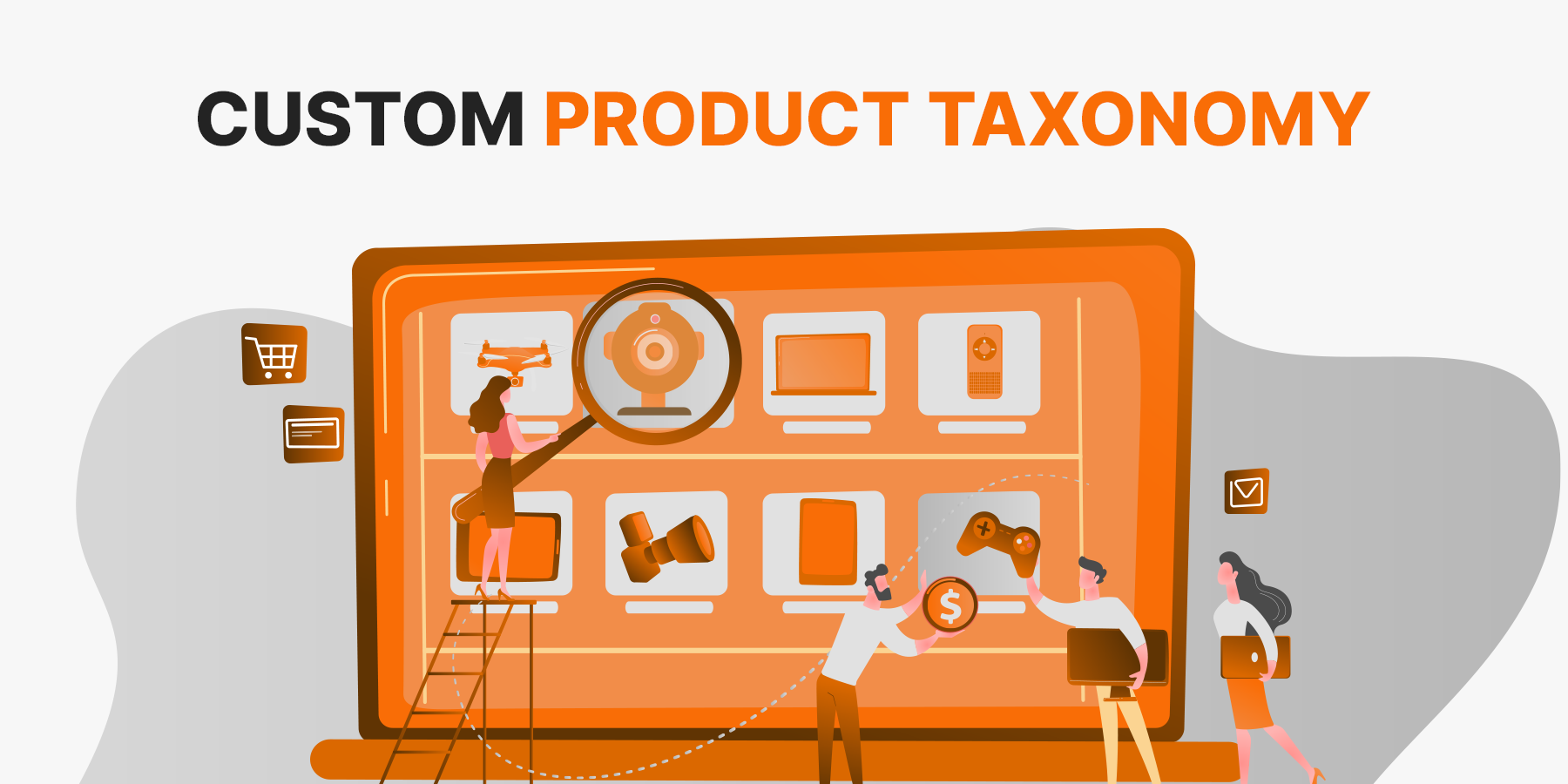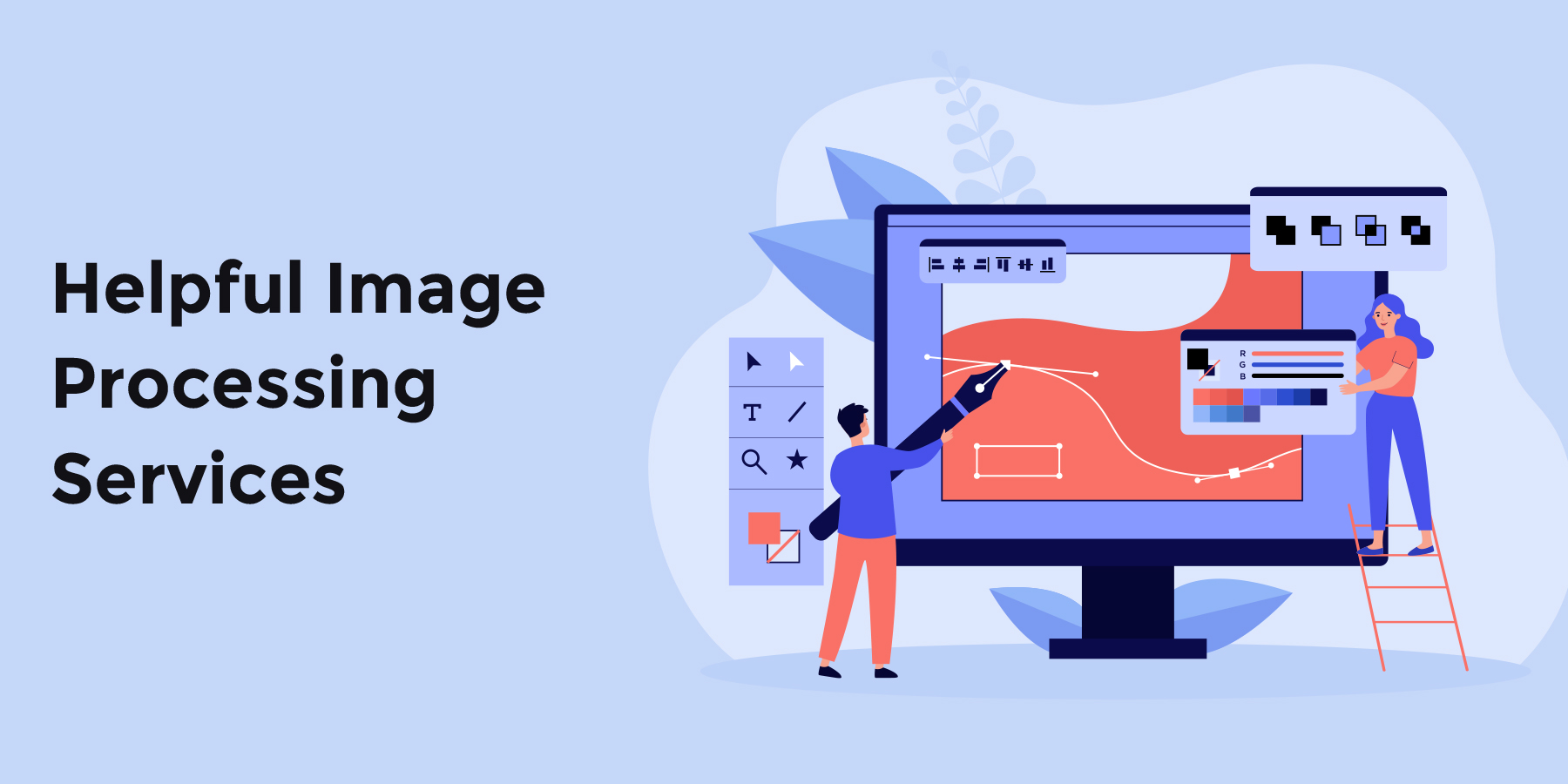When you sell on Amazon, you want your products to appear in the right category. It's essential for people to easily and quickly find your products. Amazon Store Taxonomy and Organization help ensure that your products appear under the right category or collection of products on the marketplace.
Moving forward in this blog, we will answer all your questions and concerns about Amazon store taxonomy. But first, let us find out what exactly Amazon Store Taxonomy & Organization is and how it applies to sites.
What is Amazon Store Taxonomy?
To understand what Amazon store taxonomy is, we need to know the basic meaning of product taxonomy.
The word "taxonomy" has been used in libraries for a long time. But, in online retailing, product taxonomy or product categorization refers to a logical and hierarchical structure of products. It involves classifying and organizing your products in a way that helps facilitate logical and comfortable navigation of products.
Amazon store taxonomy and organization have a similar definition. It refers to organizing, categorizing, and understanding why that is being done.
Imagine that the Amazon Store Taxonomy has 10,000+ categories, consisting of a vast catalog of products, including everything from furniture to digital goods. So, the Amazon store has hundreds of millions of SKUs.
So, you cannot simply throw your products in different categories and call them done. Instead, Amazon's product taxonomy demands a deep knowledge of your products and a logical way to list them on this eCommerce giant.
Two main parts of Amazon store taxonomy are:
Category Tree Or Product Hierarchy
Category tree groups your items by form and function in order categories. The tree is structured top-down, defining the relationship between different product groups at different levels.
Product Attributes Or Dimensions
Each product attribute has different values, and a single attribute applies to various categories. You can combine different attributes and use them as filters during product searching in the store.
Put simply, categories define the product, and attributes describe the product
The goal of Amazon store taxonomy is to logically organize all available information so that shoppers can find the desired items in the least clicks. As a result, customers can move easily through the category tree by applying the right attribute filters.
To present your products logically to customers, it’s important to understand the relationship between categories and product attributes.
Benefits or Importance of Amazon Store Taxonomy
In a brick-and-mortar store, product taxonomy is fairly simple. For example, you find milk in the refrigerated section, body lotion in skincare, and granola on the cereal side.
But this is more complex when it comes to eCommerce stores like Amazon. There are no aisles! That's when Amazon store taxonomy comes into the picture.
Here is how understanding Amazon store taxonomy can help your brand:
Better Search Performance
When you organize your products logically and correctly, there is a greater chance that your products are indexed in search results. In this case, Amazon’s search engine is more likely to display your products in response to keyword searches relevant to your offerings.
The more your products appear in search results, the more traffic and sales you get to your brand. It's how your product taxonomy takes you one step closer to increased sales.
Reduced Bounce Rate
The bounce rate on Amazon refers to the total number of visitors who land on your product page but leave or bounce after visiting. Of course, there could be any reason for the high bounce rate, and incorrect and illogical taxonomy is one of the most common reasons.
Buyers feel they need a more organized product catalog. When they can’t find the desired product fast enough, they leave the page right before you can make an impression with a well-written product listing.
As a result, Amazon may dock your products with a low search ranking, making it challenging to gain expected traffic and sales.
Improve User Experience (UX)
Following the correct Amazon taxonomy strategy allows you to equip your products with relevant categories. As a result, shoppers can easily browse the product catalog and find exactly what they need. This results in enhanced UX and more credibility for your brand on Amazon.
Using the right product categories, tags, and attributes allows correct products to appear in search results. So, you're helping people find exactly what they need with little to no friction. Amazon's product taxonomy also helps with upselling your products.
Best Practices for Amazon Store Taxonomy
There is no one-size-fits-all for fitting your products into Amazon store taxonomy. Instead, you must identify and categorize your target audience, industry, and search engines.
Some best practices for Amazon category taxonomy are:
Understand Your Audience
In today’s highly competitive eCommerce world, customers are everything. You need to know who you’re selling to and what prompts them to buy your products on Amazon.
Some proven ways to read your audience's mind include speaking to your customers, performing user experience tests, observing the audience's behavior in real time, and researching competitor trends.
With this knowledge, you may drive expected traffic and profits.
Know Your Products
Another key to your eCommerce success is understanding the relationship between your customers and the products you're selling. For this, answering the following questions can help:
- What specs of your products excite your customers?
- How to communicate your products' unique selling points (USPs) in the vast Amazon taxonomy?
- What language or search queries do customers use to locate products similar to your offerings?
Amazon SEO Keywords
Did you know that Amazon is also a search engine? It’s the largest search engine in the eCommerce world, with 54 percent of product searches taking place on this giant.
So, you've to think of the SEO (Search Engine Optimization) of your products on Amazon.
You need to insert high-volume keywords, tags, or phrases into your content, taxonomies, meta content, URLs, or rich product descriptions. Your product page will likely rank higher in search results and gain more visibility in the eCommerce store.
It's called Amazon listing optimization to rank higher and boost your sales. When you hire a professional Amazon taxonomy service, you should get Amazon listing optimization as a part of the offerings.
Allow for Content Flexibility
You cannot set eCommerce taxonomy in stone. It's a continuous process that needs professional knowledge and experience. In addition, you may need to change your approach with changing trends or when there is a new product to launch.
So, it’s best to implement the strategy in stages while testing and analyzing every outcome before the full-fledged implementation.
Why Hire Professional Amazon Taxonomy & Mapping Services?
As mentioned above, accurate product taxonomy improves a website's usability and user experience. When people can easily find your products, you’re more likely to convert them and gain a sale.
When you hire a professional service to do this, experts ensure the accurate placement of your products under the correct category and sub-category. As a result, shoppers can find your products easily and quickly, which brings you a good ROI.
Generally, you get the following Amazon product taxonomy services:
- Product attribution definition
- Localization of attribute data
- Cleansing of attribute data
- Customer preference-based categorization
- Support for data modification
- Data normalization & standardization
- Collection taxonomy definition
- SEO-based categorization
- And more!
VServe Amazon Listing Services offer depth domain expertise in Amazon store taxonomy. Combining our expertise and experience, we can help you achieve a competitive edge over other vendors.
Wrapping Up
Setting up an Amazon store offers you a more significant number of sales and ROI. But you need to organize your store and product details in a way that is reliable for your customers and Amazon.
Therefore, appropriate product taxonomy is the key to enhancing the user experience and website usability. If you are looking for the best partner to organize your product taxonomy, then Amazon Listing Services offers the best solution for you. We ensure that your products are classified in the appropriate categories to improve your Amazon store sales and traffic.
Call Vserve for Amazon Store Taxonomy Service Today!
If you have questions about Amazon store taxonomy, don’t hesitate to contact us. Drop your comments down below and we’ll gladly help you!



